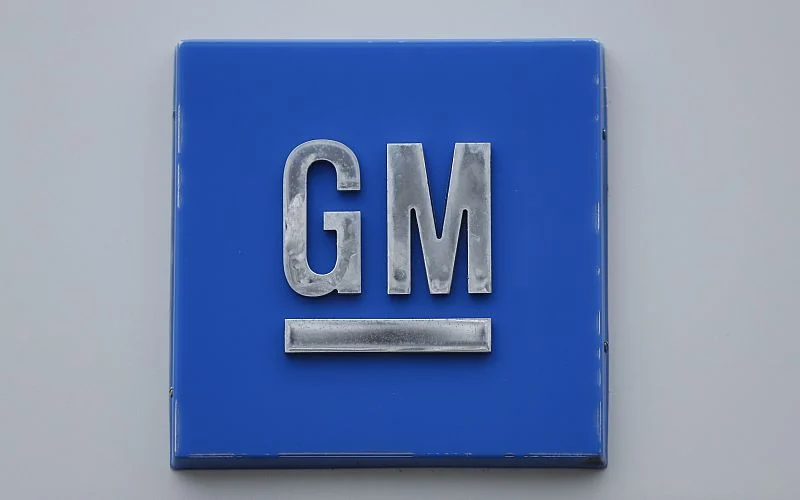The automotive world is buzzing with news about General Motors (GM), a titan in the industry, as it gears up to ramp up its output of light-duty trucks in the United States. This move comes at a pivotal moment, with President Donald Trump’s recent auto tariffs shaking up supply chains and prompting automakers to rethink their strategies. GM’s decision to boost production, particularly at its Fort Wayne, Indiana, assembly plant, reflects a broader narrative of adaptation, investment, and workforce adjustments in an industry navigating uncertain waters. Let’s dive into what’s happening, why it matters, and how it fits into the bigger picture.

A Strategic Boost at Fort Wayne
At the heart of this development is GM’s plan to increase truck production at its Fort Wayne facility, a sprawling plant in Roanoke, Indiana, where the Chevrolet Silverado and GMC Sierra—two of the company’s flagship light-duty trucks—are assembled. The automaker recently confirmed it will bring on several hundred temporary workers to maximize output, a move aimed at addressing both market demand and the ripple effects of Trump’s 25% tariffs on auto imports. These tariffs, which target everything from sedans and SUVs to light trucks and key components like engines and transmissions, are designed to nudge companies toward domestic manufacturing. For GM, this translates into a tactical shift to lean harder on its U.S.-based capacity.
The Fort Wayne plant isn’t new to the spotlight. In 2023, GM poured $632 million into the facility to gear up for the next generation of internal combustion engine full-size light-duty trucks. That investment underscored the plant’s critical role in GM’s truck business, which remains a powerhouse in the competitive full-size pickup market. Now, with tariffs adding pressure, GM is doubling down. Plant director Dennys Pimenta hinted at potential overtime days, while a webcast to employees revealed plans to tweak line speeds—changes that will add 225 to 250 jobs, according to Rich LeTourneau, shop chairman of United Auto Workers Local 2209. “Volume is our friend and protects our job security,” LeTourneau wrote in a letter to union members, a sentiment that captures the stakes for workers on the ground.
To roll out these adjustments, Fort Wayne will pause operations from April 22-25, following the Easter holiday, giving crews time to retool and recalibrate. Meanwhile, GM’s other truck plants—in Silao, Mexico; Oshawa, Canada; and Flint, Michigan, where heavy-duty models are made—will stick to their regular schedules. This selective focus on Fort Wayne suggests a calculated effort to bolster U.S. production without disrupting the broader North American supply chain.
Why GM Is Ramping Up Truck Production
So, why is GM’s increase in truck production such a big deal right now? The answer lies in a mix of policy, economics, and market dynamics. Trump’s tariffs, announced as part of a broader push to revitalize American manufacturing, aim to make importing vehicles and parts less appealing. By slapping a 25% tax on autos from Mexico and Canada—where roughly half of GM’s large pickup production happens, per a Barclays report— the administration hopes to pull more manufacturing stateside. For GM, which operates an integrated North American supply chain, this creates both challenges and opportunities.
CEO Mary Barra foreshadowed this pivot back in January during an earnings call. “We do build trucks in Mexico and Canada and in the United States,” she said. “And so we have the capacity in the United States to shift some of that.” Fort Wayne, with its existing infrastructure and recent upgrades, is a natural fit for absorbing some of that shifted production. But it’s not just about dodging tariffs. Trucks, especially light-duty models like the Silverado and Sierra, are cash cows for GM. They dominate the full-size pickup segment, a fiercely competitive arena where consumer loyalty runs deep and profit margins are hefty. Increasing output now could help GM maintain its edge while navigating rising costs tied to tariffs.
That said, the transition won’t be instant. Building new factories takes years, and while GM can tap excess capacity and tweak schedules, the broader industry faces a slog. Analysts warn that tariffs could tack thousands of dollars onto vehicle prices in the short term, a burden that might hit consumers and dent demand. For now, GM’s approach—hiring temps, tweaking operations—feels like a stopgap, buying time to assess the long-term fallout.
The Bigger Picture: Industry Moves and Market Reactions
GM isn’t alone in reacting to this tariff-driven shakeup. Just weeks before GM’s announcement, Hyundai unveiled a $20 billion plan to expand U.S. manufacturing, including a $5.8 billion steel plant to supply its American facilities. That project will create over 1,400 jobs, signalling a wider trend of automakers hedging against trade policies by doubling down on domestic investment. For GM, the decision to increase truck production aligns with this momentum, though its scale and immediacy stand out.
Market reactions have been less rosy. GM’s stock took a 4.3% hit on Thursday following the Fort Wayne news, closing at $42.50 after a $1.04 drop. Investors seem jittery, perhaps weighing the costs of tariffs against the benefits of higher output. The broader Detroit Three—GM, Ford, and Stellantis—rely heavily on cross-border supply chains, and disruptions here could squeeze margins. Still, GM’s truck business remains a bright spot, and the Fort Wayne push could shore up confidence if executed well.
Workers, Tariffs, and the Road Ahead
For the people on the factory floor, GM’s plan to increase truck production is a lifeline. The addition of temporary workers—several hundred, by one company source’s estimate—offers a quick boost to employment in Fort Wayne. The UAW’s LeTourneau framed it as a win for job security, a reminder that production volume isn’t just a corporate metric but a human one. Yet, the reliance on temps raises questions about stability. Will these roles turn permanent, or are they a fleeting fix?
Tariffs, meanwhile, loom large. Trump’s vision—more U.S. jobs, more U.S. manufacturing—hinges on companies like GM making moves like this. But the reality is messier. Parts like powertrains and electrical components, also tariffed, could drive up costs, offsetting some of the gains from domestic production. And while GM can shift some truck-making to the U.S., its plants in Mexico and Canada aren’t going quiet anytime soon. The Silao and Oshawa facilities, humming along as usual, highlight the limits of a full-on repatriation.
GM to Increase Truck Production: What’s Next?
Looking ahead, GM’s decision to increase truck production at Fort Wayne is a microcosm of an industry in flux. It’s a pragmatic play—leveraging existing assets to meet demand, blunt tariff impacts, and keep trucks rolling off the line. The $632 million investment from 2023 is paying dividends, giving GM the flexibility to pivot without starting from scratch. Yet, the bigger questions linger: How sustainable is this ramp-up? Will tariffs deliver the manufacturing renaissance Trump envisions or just higher prices?
For now, Fort Wayne is ground zero for GM’s truck ambitions. The plant’s temporary shutdown in late April will set the stage for a busier, beefier operation, one that could ripple through Indiana’s economy and GM’s bottom line. As the automaker fine-tunes its strategy, the industry watches closely. GM to increase truck production isn’t just a headline—it’s a signal of how legacy players adapt when the rules of the game shift.
In a world of tariffs, tweets, and torque, GM’s truck push is a story worth following. Whether it’s a masterstroke or a Band-Aid, only time—and the next earnings call—will tell.
